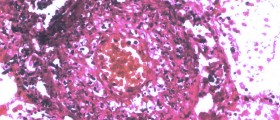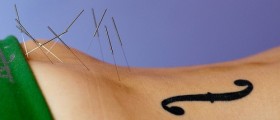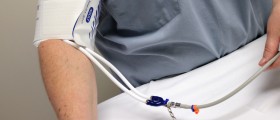
The blood flow can occur if the blood vessels create resistance to this flow, which is when vascular resistance occurs. In this article, we will focus more on this issue. We will see which types can occur, factors that influence it and how the resistance can be calculated. The vascular resistance changes if the circulatory system problems are present. Total peripheral vascular resistance and systemic vascular resistance are two types of vascular resistance. Relaxing factor that the endothelium derives and derived platelet that has serotonin are factors which regulate vascular resistance. Coronary vascular resistance is the third possible type. Endothelial, neurological and metabolic factors determine this complex vascular resistance type. In the following article, we will see which factors influence the vascular resistance.
Factors
First of all, a type of the problem affect the vascular resistance, but the blood flow (if it is turbulent or laminar in nature), blood thickness and blood viscosity are also relevant factors. The blood vessels can be under a force of some kind, like gravity, and this is also connected with the vascular resistance. Peripheral vascular disease, atherosclerosis and other vascular diseases can create problems with the circulation of blood. Vasoconstriction can be created due some conditions. This problem leads to the vascular resistance increase due to the blood vessel constriction. Also dilation of the blood vessels can occur and the name of this problem is vasodilation. It leads to the vascular resistance decrease.
Systemic Vascular Resistance
The systemic vasculature creates the resistance to the blood flow and this is described by the term systemic vascular resistance. The pulmonary vasculature is not associated with this. Vasoconstriction can be created due to the norepinephrine and epinephrine secretion, which becomes increased thus leading to the increase of vascular resistance. This factor is very important due to the connection with the creation of heart diseases. This resistance is shown in "dyne.sec/cm5" and the systemic vascular resistance between 900 and 1200 dyne.sec/cm5 is considered normal. The formula 80 x (MAP - MV) / Co will give you the SVR or systemic vascular resistance. MSP stands for the main arterial pressure (blood pressure), MVP stands for main venous pressure and CO for cardiac output.
Pulmonary Vascular Resistance
The lung vasculature creates this resistance. PVR, or pulmonary vascular resistance, from 155 to 255 dyne.sec/cm5 is considered normal and it is much lower when compared to SVR. But this resistance is much more important since heart problems can be detected via the PVR change. The problem of miscommunication between the right and left part of the heart affects this resistance. Once the damage is created due to the pulmonary vascular resistance increase, it cannot be reversed.

















Your thoughts on this
Loading...